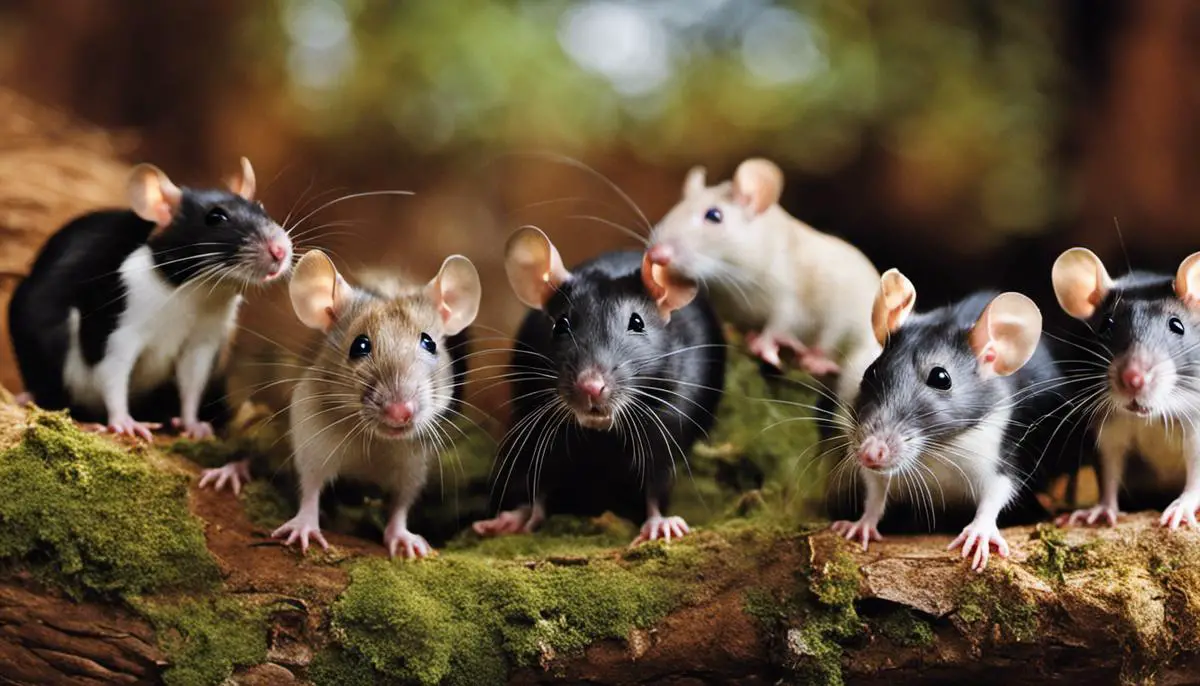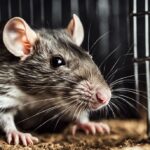We suffer no illusions about the savvy and adaptability of rats, traits that have allowed them to become successful invaders of homes and businesses. But equally, we are aware of our capacities to counter these whiskered intruders. This discourse delves into the nuances of rat behavior, allowing us to understand their habits, identifying signs of their unwelcome presence, and forecasting when an infestation is imminent. We will explore natural rat repellents, substances that pose no harm to humans or the environment, offering an alternative to hazardous chemicals. Moreover, we will provide you with step-by-step guidance on how to use these repellents effectively and maintain a rat-free environment in the long-run. The solutions provided herein may serve as a game-changer, tipping the scales of the silent war we wage with rats heavily in our favor.
Understanding Rat Behavior
How Rat Traits and Behaviors Pose Unique Management Challenges– Let’s Unravel the Mystery
Imagine, if you will, the surprising complexities of managing our furry little friends, the rats. Though typically seen as a nuisance by most, some of us find these adorable rogues as intriguing as they are mischievous. Their intrinsic traits and behaviors can present quite a challenge, making rodent management an intriguing hobby requiring a blend of knowledge, patience, and understanding.
At the core of the challenge is the rat’s intelligence. Yes, you heard that right, intelligence! Rats are incredibly smart creatures. This isn’t simply a throwaway comment or a fanciful exaggeration. It’s a well-documented fact supported by a wealth of scientific research. With cognitive skills comparable to dogs and even humans, they learn quickly, remember tasks, and can navigate complex environments with ease. This high level of intelligence becomes a significant hurdle when it comes to managing these tenacious little critters, as they can quickly learn to avoid traps, remember potential threats, and even develop new strategies for survival.
Then, there’s the matter of their physical adaptability. Rats boast flexible bodies, adept at squeezing through minuscule openings as small as a quarter for an adult rat. Paired with their deft climbing skills that make even the most vertical surfaces surmountable, it’s clear that there’s little stopping these small animals from getting where they want to be. This trait enormously contributes to the challenge of managing rats, as no crevice or high surface appears out of their reach.
Social behaviors also play a significant role in rat management. Rats are communal animals and live in colonies that include several families. The colony helps each other in finding food sources and shares information about dangers in their environment. This social structure, coupled with their rapid reproduction, makes rat management a constant endeavor. It’s not just about dealing with a single, isolated rat – there’s always a community behind every furry friend you come across!
Finally, let’s talk about a rat’s tenacity and resilience. These rodents are highly adaptable survivors; they flourish in various habitats, from rural fields to city sewers, due to their ability to eat nearly anything. Coupled with their fast reproduction, this helps them bounce back from population declines quickly. As such, successful rat management goes beyond temporary solutions – it calls for a consistent, long-term strategy.
In conclusion, the natural intelligence, physical adaptability, social behavior, and robust survivability of rats are what make them a uniquely challenging hobby to manage. Yet, for those enamored with these fascinating creatures, these challenges only add to the allure and satisfaction in learning, managing, and co-existing with these surprisingly complex and mesmerizing mammals. It’s a constant journey of discovery, that rewards the studious and the persistent. Enjoy the journey, fellow rat enthusiasts!
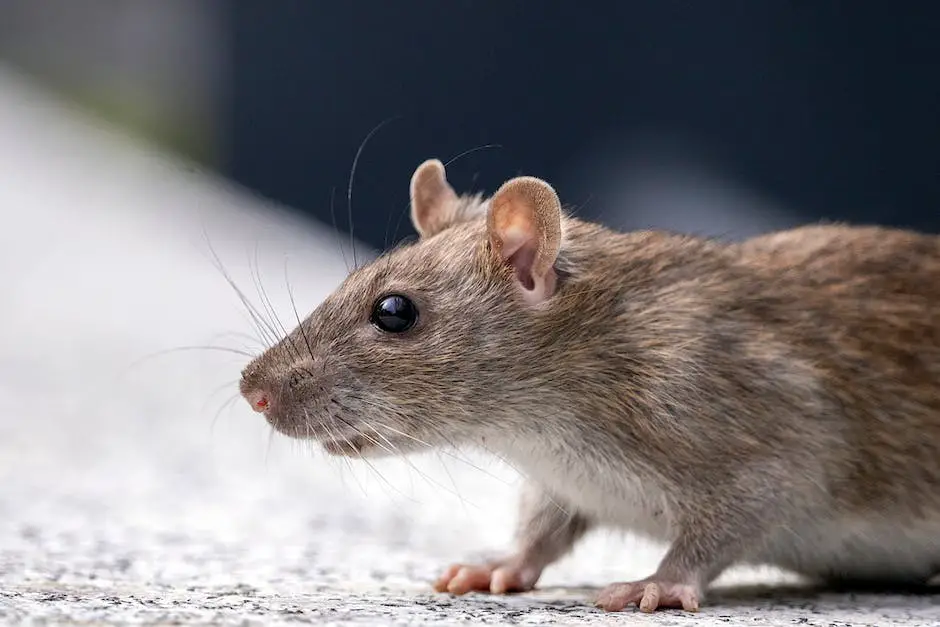
Identifying Possible Rat Infestation
Spotting the Signals: Indicating a Potential Rat Infestation
Honed senses can play a key role in identifying the presence of unexpected, nimble visitors in the form of rats. Being such savvy creatures, their adept camouflaging habits often go unnoticed, making the understanding of signs depicting a rat infestation essential.
One of the most recognizable indicators is physical evidence. Chew marks on furniture, wires, or food containers, are typical signs of their sprightly presence. Ceilings, walls, cupboards, or even near food storage, shiny black droppings or urination stains may be spotted. Rats are known for their continuous gnawing habit, using their sharp incisors to bite on various surfaces including plastic or wood, a trait often leaving behind their telltale signature.
Moreover, the unmistakable pungent smell rats carry can serve as an evident hint. If a musty, ammonia-like odor persists, it might be well indicative of a rat settlement nearby. Rats primarily use scent trails for navigation, and, therefore, a lingering smell could be indicative of an established route, presumably leading to their nesting area.
Rats, being nocturnal beings, are often heard rather than seen. Their scurrying, scratching, or gnawing sounds during late hours, often emanating from ceilings, walls or under floorboards, are unmistakable indicators of their presence.
In addition to the above, rats are architecturally adept builders. They’re capable of creating intricate nests using various materials, including shredded paper, cloth, or plant materials. Discovering such structures, typically in secluded and warm areas, is highly indicative of a rat infestation.
Observing their tracks and tail marks in dust-prone areas can be another sign. Each rat variety leaves unique footprints and tail drag marks that can be a considerable help in identifying the species and estimating their population size for more efficient management strategies.
Garden damage can often be attributed to these rodents as well. Burrows or holes in and around the yard, plants showing signs of nibbling, and fruit bitten at the base are classic pointers towards these uninvited guests.
Finally, pet behavior can be a valuable rat indicator. Cats and dogs are known for their heightened senses and could alert you to the possible presence of these creatures. Agitated behavior, excessive marking around the house, or constant staring at a particular area may all signal a rat infestation.
Catching these early signs can give a head start on devising an effective rat management strategy, ensuring coexistence without harm or hassle. Embracing this unique hobby begins with understanding these whiskered explorers, and there’s ample beauty in that challenge.
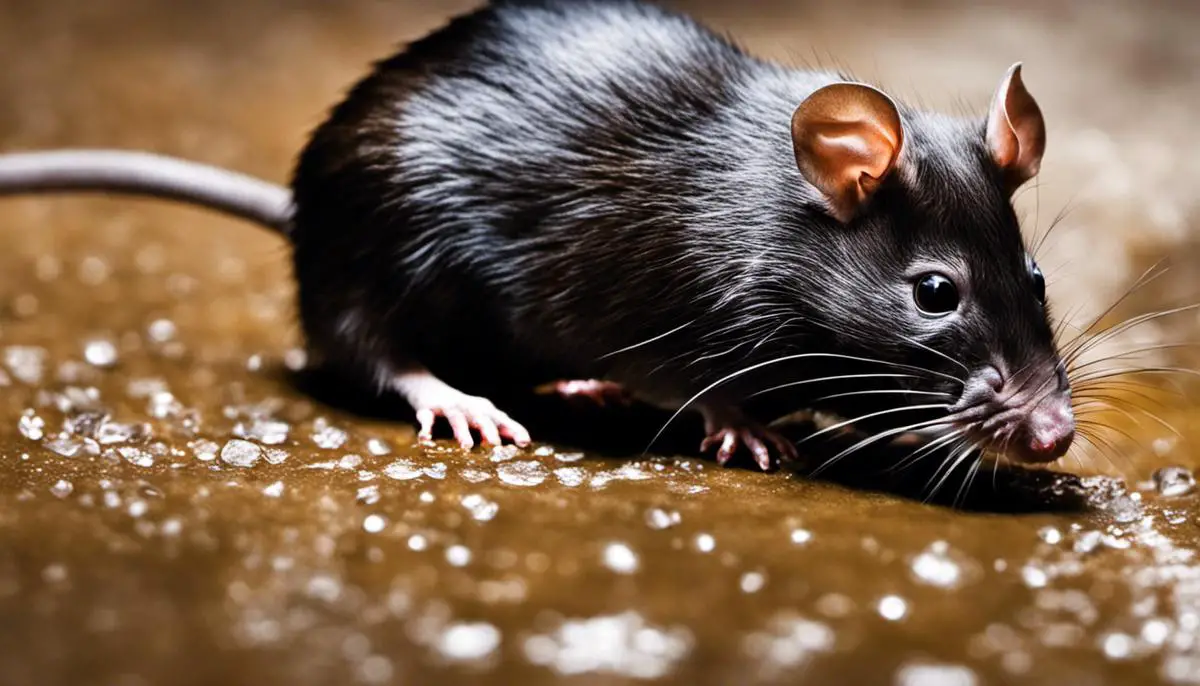
Introducing Natural Rat Repellents
After becoming familiar with our ingenious rodent counterparts, their impressive gift of adaptation, and their significantly social nature, it’s time we pivot our focus toward the Holy Grail of rat-management – natural deterrents. With their steadfast tenacity, it’s clear that simple, harsh methods won’t cut it; we need mother nature as our ally!
Peppermint Oil: Aromatic Bliss or Blister to Rats?
Emanating a robust, eye-watering aroma, peppermint oil acts as a natural, non-toxic rat deterrent. Their sensitivity to the smell is on another level compared to us, making our favorite herbal scent their olfactory nightmare. Splashing it around the house (emphasis on the ‘hotspots’) can provide a breath of fresh, rat-free airfare.
Predator Odor: Tapping into Fear
Cats, snakes, owls – rats fear them right down to their genes. Emulate their presence by strategically placing non-poisonous predator urines. Fear of predators can override their instinctual gnawing and scurrying, enticing them to exit stage left. Remember, though, to follow all ethical guidelines when leveraging these predator cues.
Ammonia: The Imitator
Ammonia’s strong, pungent odors mimic predators urine, inducing a similar fear in rats. Soak cotton balls in ammonia and place them strategically to ward off the pesky rodents. Beware, though, this stuff is potent – use sparingly and with caution.
Sound Deterrents: Can You Hear the Repulsion?
Certain ultrasonic devices emit high-frequency sounds deemed annoying to rats yet are inaudible to human ears. These can produce a discomfort zone for rats, leading them to seek quieter pastures. No harm – simply sound psychology!
Steel Wool: A Mouthful Dilemma
Rats hate the metallic, rough texture of steel wool – it’s not quite the chew toy they’re looking for! Stuffing their entry points with this material keeps them at bay, forcing them to reconsider their cozy new dwelling.
Hot Pepper: Spice Up the Defense
Rats may thrive on gourmet garbage, but fiery hot pepper flakes tip the scale. The sharp, robust flavors pack the heat to both their taste buds and noses, making it a spicy barricade against the midnight munchers.
Minimizing Food Source: Target the Lifeline
Rats hunger for accessible and plentiful food sources. Resilient as they are, reducing access to food can deter their continuous invasion. Store leftovers properly, clear out fallen fruits, and seal your compost. This won’t entirely stop them, but it’s another card in your winning hand.
In the end, managing rats is a continual game of strategy, especially when aiming for co-existence. These natural deterrents are not rat-proof shields but rather tools to tilt the balance in our favor. The rat saga continues – and armed with nature’s gifts, we are ever more prepared for the next round!
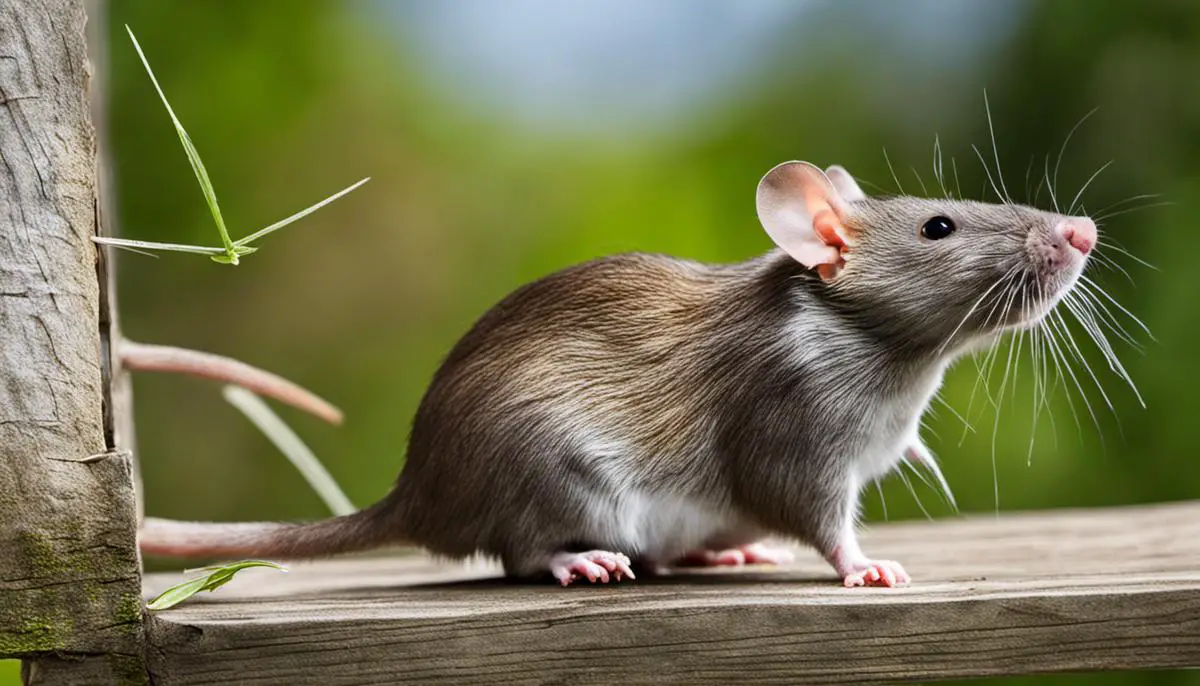
Implementing Natural Rat Repellents
Diving into the world of rat deterrents, you’ll find a spectrum ranging from benign to brutally effective methods. So, let’s dig into how each of these can be used in the most effective way!
For starters, peppermint oil is a versatile player in the repelling game. Rats find the strong minty aroma very unappealing. Soak cotton balls in the oil and strategically place them where rat activity is high. Refresh every few days to maintain potency. Remember, peppermint oil is pleasant to humans but not to these pesky rodents, so be generous with it!
Predator odors strike fear into a rat’s heart – we’re talking biological instinct here! Fox and bobcat urine are two favorites. These can be purchased as granules that you sprinkle around your property. Their smell signals danger, which forces the rat to shift its base to a safer location. Take note: some of these predator odors can be strong and might not be suitable for indoor use!
When it comes to ammonia, it mimics the smell of a predator’s urine due to its strong, pungent odor. Indeed, most pests hate the smell of ammonia! Fill a small bowl with ammonia and place it near rodent hotspots. However, be careful with the quantity and placement, as it has a strong odor that might disturb household members.
Sound deterrents have an innovative approach. They emit high-frequency waves that are inaudible to human ears – but unbearable for rats. Use them inside your home, especially in attics and basements where rats love to dwell. However, remember to move these devices around since rats can get used to them if they remain in one place.
Steel wool makes an excellent barrier for rat holes. These furry creatures dislike the rough texture of steel wool. Stuff it into their entrances, and you’ve essentially blocked their door with an annoying ‘spiky’ mat.
Using hot pepper flakes is an ‘old school’ technique. The capsaicin in peppers irritates the rats’ noses and discourages them from treating your property as a buffet. Sprinkle these flakes generously around rat-prone areas; plus, you can mix them with birdseed or sprinkle around your garden to add an additional layer of protection.
Minimizing food sources plays a vital role in deterring rats. Maintain clean surroundings, ensure trash cans have secure lids, and avoid leaving pet food outside. All these practices discourage rats from foraging in your area – no food, no rats, simple!
But let’s remember: while all these methods are effective, their effectiveness depends on the determined implementation of an ongoing management strategy. Regular cleaning, sealing entrances, and regular use of deterrents are key to a rat-free environment. After all, managing these highly adaptable creatures requires consistency and strategy as much as it requires knowledge and patience. So, let’s keep up the good fight against these resilient rodents!
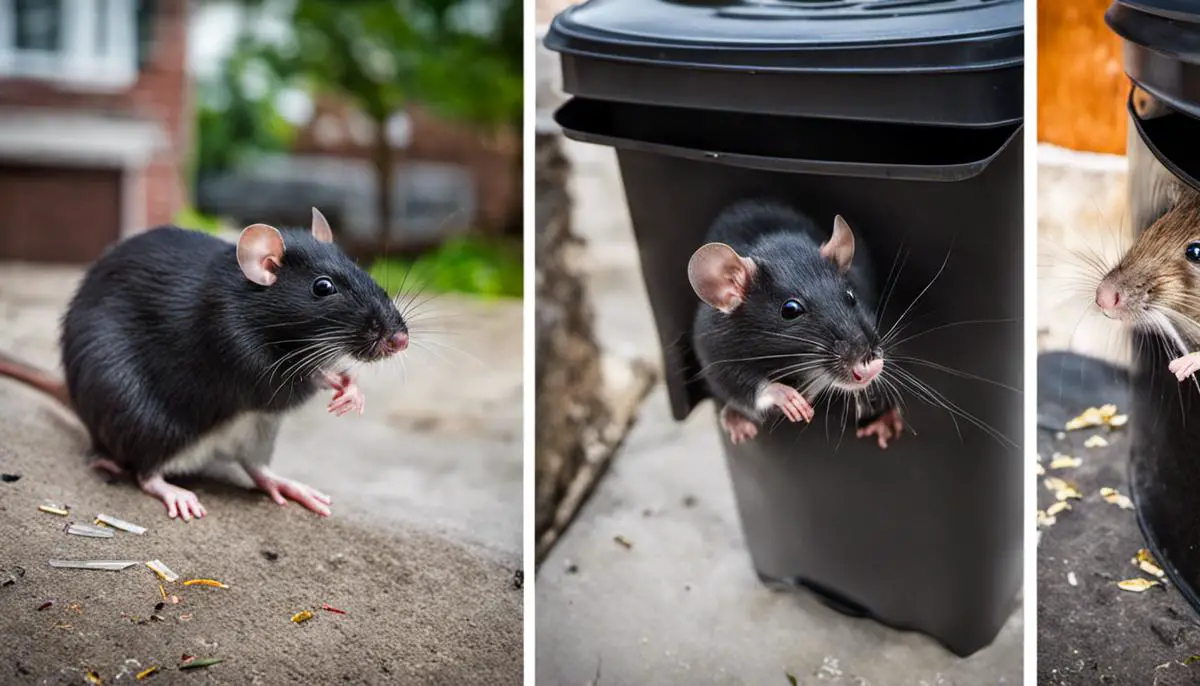
Maintaining a Rat-Free Environment
Planting mint around the property can be a tactical move, considering the aversion rats exhibit towards this plant. However, while peppermint oil is a versatile tool against rats, it is necessary to periodically reapply it since the oil tends to evaporate quickly.
To magnify the efficacy of this approach, consider complementing peppermint oil with predator scents. Commercially available non-toxic repellents, mimicking the smell of cat urine, can create an illusion of a predator’s presence, steering the rats clear of the area.
Ammonia is another potent tool in this arsenal; however, it demands cautious usage due to its toxic nature. Strategic placement of ammonia-soaked rags or bowls in areas rats frequent, creates the impression of a predator’s urine, further unsettling the rats.
Sound deterrents are also worth considering; these ultrasonic devices emit high-frequency waves, disturbing the rats and causing them to leave their comfort zones but not affecting humans. These can be strategically paired with physical barriers like steel wool, particularly effective at blocking rat holes due to its coarse texture which rats absolutely detest gnawing on.
It can also be fruitful to incorporate hot pepper flakes into this strategy. The fiery hot capsaicin can be sprinkled around potential entry points or rat paths, irritating their nostrils and deterring them.
Rats being highly motivated by food sources, eliminating their access to food can be a significant blow to the rat presence. This includes keeping garbage properly secured and limiting outdoor composting.
Inextricably linked to all these methods is an unwavering consistent approach to rat management. Going through the occasional lapse of effort could lead to a remarkable bounce-back from these rodents due to their high adaptability. Hence, the luxury of inconsistency is not a privilege rat management accords.
Remember, rat management is a dynamic process requiring constant vigilance and patience. It is a marathon, not a sprint. With these natural repellents and consistent practices, those rats won’t stand a chance! And maybe, just maybe, one can extract pleasure from the artfulness and strategic thinking required in this unusual hobby. After all, it’s all about understanding and outsmarting these tenacious creatures!
The above elucidates on effectively using natural methods to prevent rat intrusion, contributing to a healthier, cleaner, and certainly, a rat-free environment!
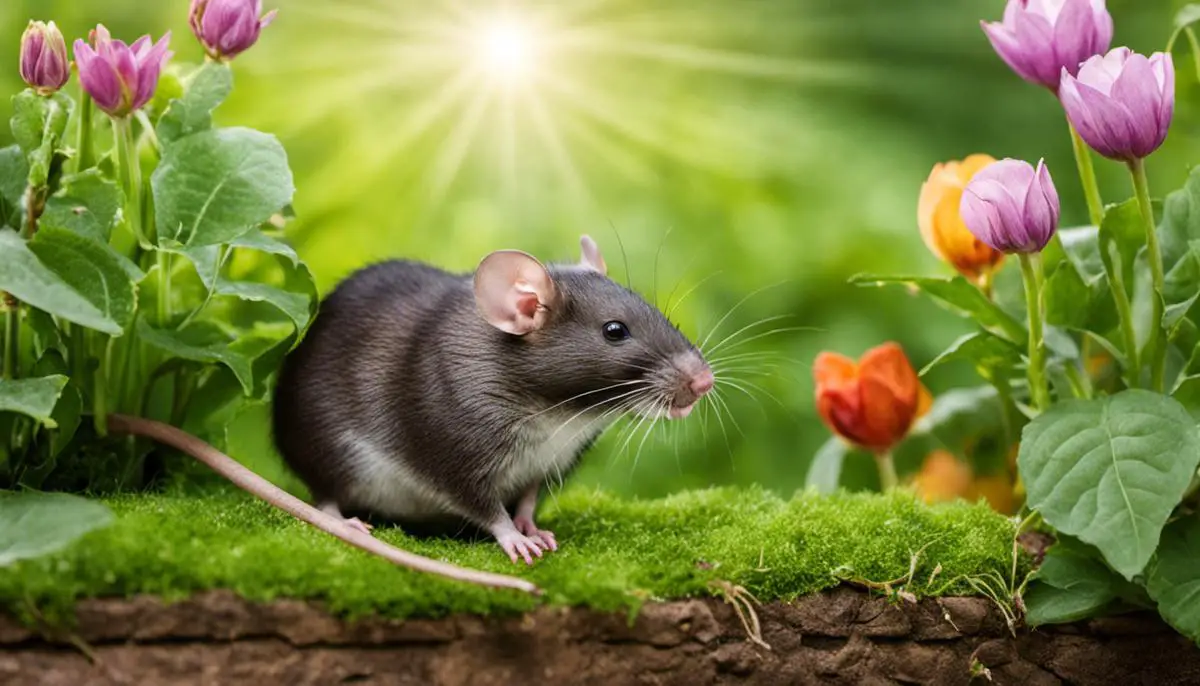
By acknowledging our progress, we have hissed lessons to outmaneuver rats in their own game, gaining insights to their unwelcome invasions and pre-empting infestations. Exposing the utility of natural rat repellents, we have championed a harm-less approach to this age-old problem. Imparting step-by-step procedures to use these repelling agents and maintain an environment that is inhospitable for rats, we have handed you a blueprint to a rat-free residence. Armed with this knowledge and methodology, we hope you stride forth confidently to reclaim your living spaces. Above all, you can now bolster your defenses – understanding your adversary and keeping the whiskered intruders at bay with the least harm to Mother Nature.

